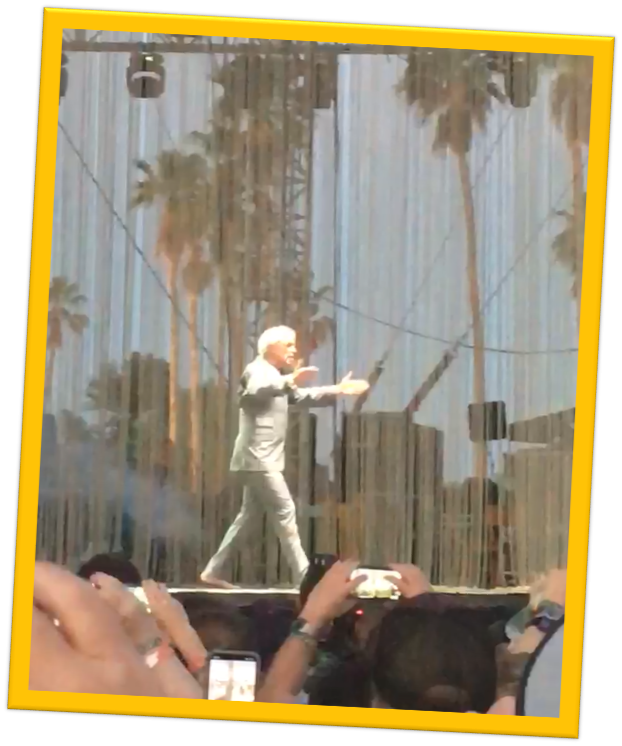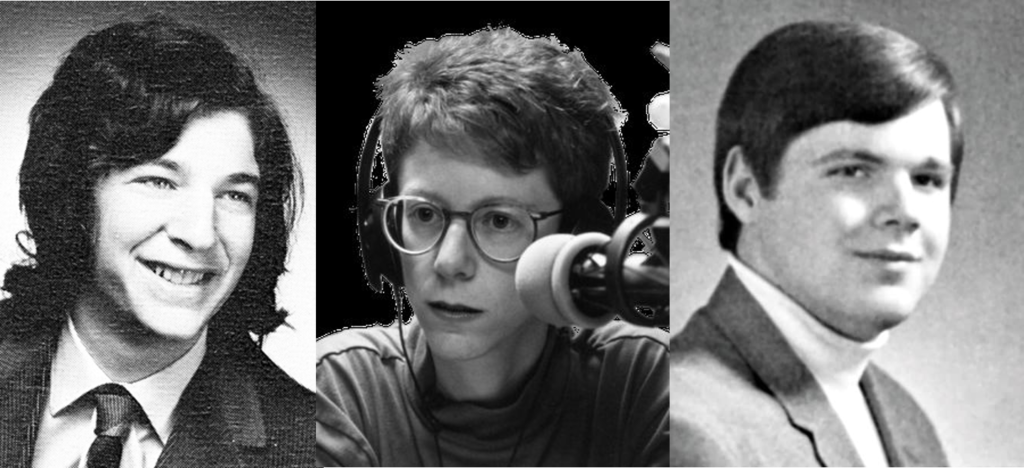
I owe whatever inspiration triggered today’s blog post to my friend and music maven, Alan Cross. Over the weekend, he posted a smart story about how the Coachella Valley Music and Arts Festival needs more than famous “anchor store bands” to make it a success.
Yes, if you attended Coachella this past weekend in Indio, California, chances are you saw some really big names – Beyoncé, Eminem, and David Byrne. You also saw bands that weren’t anywhere near this well-known and popular a year ago – Greta Van Fleet comes to mind. They’re a huge draw today, and a great reason to make the trek and pay the dough to spend time in the great outdoors with thousands of your closest friends.
And that was Alan’s point. It’s easy to book a festival with big brand rock stars. As long as you pull up the train cars loaded with cash, anything’s possible. And in fact, big festivals like Bonnaroo, Lolapalooza, and Coachella have had to do just that. But most attendees are also hoping to see and hear “the next big thing” – the bubbling under, unknown treasure that just might break through.
Alan points out the art and intution that goes into booking a show like Coachella many months in advance, hoping the lineup comes together when spring rolls around. It’s tough to predict who will be hot, who will fizzle, and who will end up being the buzz band of the weekend.
My son was on hand for Coachella this year, working with a video crew. That provided him with great access (when he had a little off-time) to the  performers. He sent me a short video of one of my favorite performers, David Byrne. It’s interesting to see the Talking Heads’ brilliant front man sporting a head of shocking white hair. But even New Wave bands age.
performers. He sent me a short video of one of my favorite performers, David Byrne. It’s interesting to see the Talking Heads’ brilliant front man sporting a head of shocking white hair. But even New Wave bands age.
And that’s another reason why it’s essential for the lifeblood of a multi-day festival like Coachella to bring in the most appealing heritage acts, while continuing a focus on what’s around the corner.
At Coachella, new bands earn their chops off the main stage, at side stages called Yuma and Sonora. This is where emerging acts go to get exposed and discovered.
In many ways, the broadcast radio industry faces some of these same chlallenges. Radio needs to learn the music festival lesson, using its own “second stages” to identify and groom new talent.
Yes, there are the big morning shows – including the old standby syndicated shows that have been around for decades – as well as heritage jocks that are fixtures in their markets all over the country.
These are the big names that have established their popularity among both listeners and advertisers. But time is an equal opportunity heartbreaker, and as we continue to learn with each passing month, rock and radio stars have to step down or simply pass on.
In just the past several months, AC/DC’s Malcolm Young and Delores O’Riordan of the Cranberries are no longer in rock n’ roll circulation. On the radio side, retirements are happening with regularity, along with untimely passings, including Art Bell who left this earth this past weekend.
Simply put, most radio stations – commercial and public – don’t have “succession plans.” And for the lifeblood of the industry, that’s not a good thing. Radio’s “second stages” – the overnight and weekend dayparts – have all but disappeared, making it especially challenging to discover the next John Boy & Billy or Matty Siegel.
And yet, many radio companies are investing in the future, especially on the digital side of the street. We have long been proponents of the industry bolstering its staff and skill sets in areas that include video production, social media, podcasts, and the other crafts that are so critical to building strong, integrated media brands. At the NAB last week, it was common to see new digital managers and execs who have taken on integral roles in their companies. In a rapidly changing tech environment, this is a good thing.
But the “mothership” – the radio stations themselves – are supported by their community roots, their local orientations, and the strength and appeal of their personalities. But like the music industry, talent needs to be replenished by new DJs, cutting edge shows, and entertaining hosts we don’t even know about. They’re out there, but radio’s ability to discover and nurture them have diminished greatly as voicetracking has become the economically scalable savings plans that most companies simply can’t resist.
So, what about radio establishing its version of the “second stage” – HD2 channels set aside by every broadcaster in markets that run a cluster of stations? Having a talent incubator down the hall – perhaps a series of two-hour shows throughout the day – could give young, aspiring talent the chance to earn their chops, while giving the programmers in the building exposure to a whole new talent pool.
I’m all about supporting efforts from Conclave to the National Radio Talent Institutes, as well as state broadcaster associations – all of which support young broadcasting students and fledgling radio newbies. As an industry, we have to do this at as high a level as possible.

But local initiatives to discover, grow, and nurture talent is a strategy that is all but absent from so many broadcast companies. And yet, it’s these types of endeavors that hold so much promise.
In much the same way that VCs place their bets on funding many companies, hoping that one will strike gold, local radio broadcasters need to provide minimal support to radio broadcasting aspirants in the hope that an Elvis Duran, Ellen K., or Ira Glass might emerge. There are high school and college students out there who could be that next generation of radio stars, given the chance, the exposure, and the coaching.
For every cluster investing in new media, an even more modest stake set aside for local talent development is something that both boards of directors and shareholders would applaud. Radio not only needs a talent succession plan – it needs to lean in, seek out, and train the next generation of on-air and digital media stars.
Green bananas are never tasty today. But for the radio business, it’s not about today.
Who will be radio’s on-air superstars in a decade?
That’s the question every radio CEO should be asking…today.
- What To Do If Your Radio Station Goes Through A Midlife Crisis - April 25, 2025
- A 2020 Lesson?It Could All Be Gone In A Flash - April 24, 2025
- How AI Can Give Radio Personalities More…PERSONALITY - April 23, 2025




Couldda, Shouldda, WooduHD.
My three least favorite words in the dictionary, Clark.
Well, I for one have been training from scratch using the “previous day” log in the voice tracking studios. It’s off air, but we approach it as if the tracks were going to air. All I lol for is a true “personality” with a passion to learn radio. I can teach them the science of what we do, the arc of a stop set, what to do at segues, etc.. The average age of my airstaff is 40+. The next generation is in training. Usually takes two to three months of daily tracks to get to the point where they can start on the air and begin honing their craft for real. It can and must be done.
Sounds like a workable system, Rick. Not at all surprised you’re focused on this. Thanks for the comment (and the idea).
The farm system for radio was destroyed by syndication. The art of podcasting and live streaming has revived the Hope of young, clever and creative talent being discovered. I witnessed WJR ‘s removal of local talent overnights (Larry Patton, Bob Heinz, Kevin Joyce etc) replaced by Art Bell. Art stole alot of jobs from future local on air talent. Because there are only 24 hours in a day to train New, fresh talent.
And if they’re not growing the next generation at a station like WJR, you really have to wonder about the vision. I agree with you that newer platforms (like podcasting) opens up a whole new world of talent possibilities, but there’s a difference between recording a podcast and being on the radio. Thanks for the comment, Kevin.